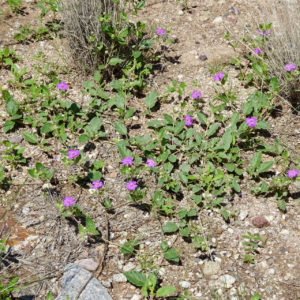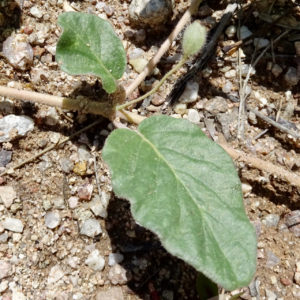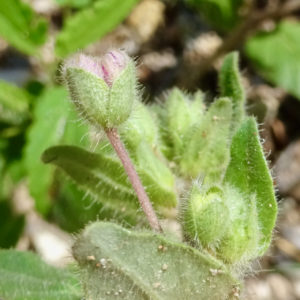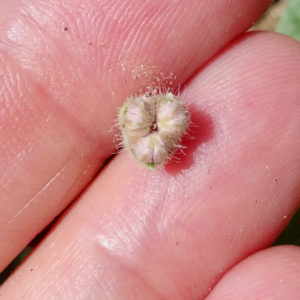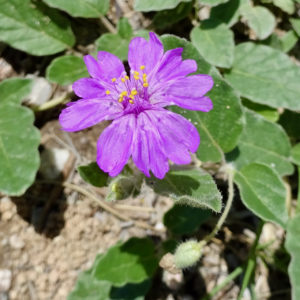Trailing Windmills
Allionia incarnata
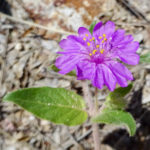
About the Plant
Trailing windmills is a short-lived, ground-hugging perennial native to southwestern U.S. as well as Central and South America. Though it may grow and flower in spring, typically April and May, trailing windmills really show off after the monsoon rains begin, flowering in August and September. The flowers are a bright, deep pink, large and showy. Each "flower" is actually 3 flowers clustered together, appearing as one.
Trailing windmills spread easily by seed and can often be found in waste places and areas of new construction.
Notes:
- Trailing windmills may also be called pink windmills or trailing or pink four o'clocks, a reference to its plant family. The flowers stay open all day.
- The other common summer-blooming four o'clocks in our area are red spiderling (Boerhavia coccinea), which also hugs the ground, and Coulter spiderling (Boerhavia coulteri), which has a more upright form.
- Trailing windmills were used by indigenous peoples to treat swelling, fever, diarrhea, and kidney problems.
More Information
Weekly Plant on summer-blooming four o'clocks
Map of distribution in US (yellow indicates species is rare)
Technical botanical description from SEINet
ID Characteristics
The leaves of trailing windmills are opposite, with one leaf always much larger than the other. The larger leaf might be 2.25 inches long while the smaller leaf is only about an inch long. The edges of the leaves are slightly wavy and undulating. They are occasionally edged in red or white, though a red edging is more common in a close relative - red spiderling. The leaves and stems are very sticky, and it is common to find sand particles sticking to the leaves.
The inflorescence and flower structure of trailing windmills is unusual. What looks like a flower bud (first photo above) is not made of sepals but of 3 bracts, each about 1/4 inch long. Inside the bracts are 3 flowers - you can see their flower buds in the second photo above.
Each flower is very asymmetrical, producing "petals" (really sepals, this flower has no true petals) on only the outer side of the flower. You can see the slight separation between the three flowers in the photo. Usually these 3-flowered clusters will appear to be a single flower. Each flower has 4-7 stamen with yellow anthers. The pistil is topped with a round, white stigma (click on photo to enlarge). The 3-flowered cluster is about an inch across, large enough to catch your attention, and held on a slender stalk emerging from the leaf axil, up to about 1 inch long.
